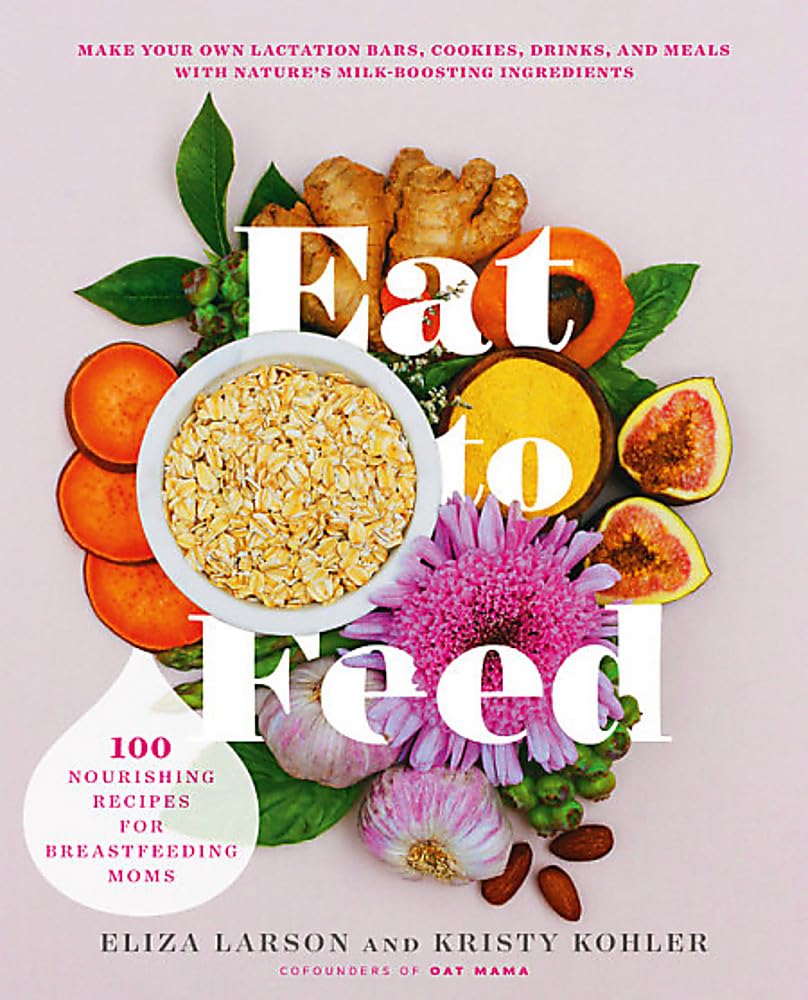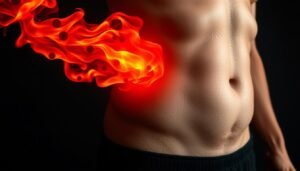Get our FREE E-Book HERE - 120 TIPS for Losing Weight & Bonus Tips for Postpartum Weight Loss & Dad’s Postpartum Experience
Keto While Breastfeeding: Safety & Tips Guide


When it comes to following a ketogenic (keto) diet while breastfeeding, there are important considerations for the safety and well-being of both you and your baby. In this guide, we will explore the basics of keto and breastfeeding, discuss the safety of doing keto while nursing, and provide tips and alternative nutrition plans for breastfeeding mothers. It’s important to consult with your healthcare provider before making any dietary changes, especially during the postpartum period.
Key Takeaways:
- Keto diet while breastfeeding requires careful consideration and expert advice.
- Consult your healthcare provider before making any dietary changes.
- Alternative nutrition plans like the Mediterranean or low-carb diets may be safer options.
- Ensure sufficient caloric intake and stay hydrated while following any diet.
- Prioritize your health and the well-being of your baby when considering dietary choices.
Understanding the Basics of Keto and Breastfeeding
In this section, we will provide an overview of the ketogenic diet, including what it is and how it works. We will also discuss the specific energy needs of breastfeeding moms and how following a keto diet may impact milk supply and quality. It’s important to understand these basics before considering keto while breastfeeding.
Read Also: Can You Do Intermittent Fasting While Breastfeeding?
What Is the Ketogenic Diet?
The ketogenic diet, often referred to as the keto diet, is a low-carb, high-fat eating plan that has gained popularity for its potential health benefits. The main goal of the ketogenic diet is to put your body into a metabolic state called ketosis, where it primarily burns fat for fuel instead of carbohydrates.

Energy Needs for Breastfeeding Moms
As a mom breastfeeding on keto, your energy needs are higher than usual to support both your own health and the production of breast milk. It’s important to fuel your body with the right nutrients to meet these increased energy needs. The ketogenic diet may provide an alternative source of energy by relying on fat as fuel instead of carbohydrates.
Keto’s Impact on Milk Supply and Quality
One concern that breastfeeding moms may have when considering the keto diet is its potential impact on milk supply and quality. While limited research is available on this specific topic, some anecdotal evidence suggests that following a keto diet may temporarily decrease milk supply for some women. However, other women have reported no changes in their milk production while following a well-balanced keto diet.
It’s important to note that every individual is different, and what may work for one person may not work for another. If you decide to follow the keto diet while breastfeeding, it’s crucial to monitor your milk supply and consult with a healthcare provider if you have any concerns.
Is It Safe to Do Keto While Breastfeeding?
So, can you do keto while breastfeeding ? dieSafety is a top priority when it comes to breastfeeding. As a mother, you want to make choices that not only promote your own health but also ensure the well-being of your baby. When considering embarking on a ketogenic (keto) diet while breastfeeding, it’s important to understand the potential risks and safety considerations.
Currently, there is limited research available specifically on the safety of doing the keto diet and breastfeeding at. The effects of this dietary approach on the composition of breast milk and its impact on infant development are still not well understood. Therefore, it’s crucial to consult with your healthcare provider before making any drastic changes to your diet during the nursing period.
While a keto diet may offer benefits such as weight loss and improved metabolic health for some individuals, there are potential risks that need to be considered. It’s important to note that very low carbohydrate intake, characteristic of the keto diet, can lead to a state of ketosis. Although ketosis is generally safe for healthy individuals, there is a concern that it may affect milk supply and quality in breastfeeding mothers. Your healthcare provider can assess your individual situation and provide guidance on the dietary choices that are most appropriate for you.
It’s also important to note that some breastfeeding mothers may experience a decrease in energy levels when following a keto diet. The demands of breastfeeding require additional energy, and it’s crucial to ensure sufficient caloric intake to support lactation and overall well-being. This is another aspect to discuss with your healthcare provider when considering the safety of keto while breastfeeding.

Recognizing the Importance of Sufficient Caloric Intake
Sufficient caloric intake is crucial for breastfeeding moms to maintain their energy levels, support milk production, and meet the nutritional needs of both themselves and their babies. As a breastfeeding mother, your body requires extra energy to fuel lactation and provide for the growth and development of your little one.
How Many Calories Does a Breastfeeding Mother Need?
The caloric needs of breastfeeding mothers vary depending on factors such as age, weight, activity level, and the age of the baby. On average, breastfeeding moms require an additional 300-500 calories per day compared to non-breastfeeding women.
Challenges with Satiety on a Keto Diet
Following a keto diet, which is low in carbohydrates and high in fats, can present challenges when it comes to satiety. Fat is a more calorie-dense macronutrient, meaning it provides more energy per gram compared to carbohydrates or protein. As a result, it may be challenging to consume enough calories while on a keto diet, especially if you are focusing on high-fat foods.
Additionally, some individuals may find that the elimination of certain food groups, such as fruits, whole grains, and legumes, on a keto diet can lead to a limited variety of food choices, which may contribute to feelings of restriction and decreased satisfaction after meals.
However, it’s important to note that every individual is different, and while some breastfeeding moms may find keto to be satisfying and sustainable, others may prefer alternative nutrition plans that better align with their preferences and lifestyle.
Hydration and Electrolytes: Key Considerations for Keto Moms
Proper hydration and maintaining electrolyte balance are crucial for the health and well-being of breastfeeding moms following a ketogenic diet. In this section, we will explore the important role of hydration in lactation and how the ketogenic diet can impact electrolyte balance.
The Role of Hydration in Lactation
Staying hydrated is essential for all breastfeeding mothers, regardless of their dietary choices. Adequate hydration supports milk production, helps prevent dehydration, and promotes overall health.
When following a ketogenic diet while breastfeeding, it’s important to pay attention to hydration levels because the body tends to excrete more water due to the reduction of carbohydrates. Drinking enough fluids, such as water, herbal tea, and low-sugar electrolyte drinks formulated for breastfeeding moms, can help maintain sufficient milk supply and prevent dehydration.
Remember to listen to your body’s cues for thirst and aim to drink enough fluids throughout the day. It may also be helpful to keep a water bottle handy so you can easily stay hydrated.
Electrolyte Balance and Ketogenic Dieting
The ketogenic diet, which limits carbohydrate intake, can affect electrolyte balance due to the changes in how the body processes and excretes fluids.
On a ketogenic diet, there is a tendency to excrete more electrolytes, such as sodium, potassium, and magnesium, through urine. This can lead to an imbalance and potentially result in symptoms like muscle cramps, fatigue, and dizziness.
To maintain electrolyte balance while following a keto diet, consider incorporating foods rich in electrolytes, such as avocado, leafy greens, nuts, and seeds. Additionally, using electrolyte supplements specifically formulated for keto dieters or consulting with a healthcare professional can help ensure you’re getting the necessary balance of electrolytes.
Remember, it’s essential to prioritize electrolyte balance and stay aware of any symptoms or changes in how you feel. If you experience any concerning symptoms, seek medical advice promptly.
By focusing on proper hydration and electrolyte balance, you can support your overall well-being and optimize the benefits of a ketogenic diet while breastfeeding.

Identifying Signs of Ketoacidosis in Nursing Mothers
Ketoacidosis is a serious condition that can occur in nursing mothers who are following a ketogenic diet. It is important to be aware of the signs and symptoms of ketoacidosis and the potential risks it can pose to you and your baby while breastfeeding. Enhanced monitoring and medical supervision are crucial when incorporating keto into your breastfeeding journey.
- Extreme thirst
- Frequent urination
- Severe fatigue
- Confusion
- Nausea and vomiting
- Difficulty breathing
These symptoms may be more challenging to identify, as some of them can overlap with normal postpartum experiences. However, if you experience any of these symptoms, it is important to seek medical attention immediately. This is especially crucial if you have been following a ketogenic diet and are breastfeeding.
Risks of ketoacidosis while nursing:
- Dehydration: A keto diet can lead to increased urination, which may cause dehydration if proper hydration is not maintained.
- Electrolyte imbalances: Imbalances in electrolytes, such as potassium and sodium, can occur with prolonged ketosis.
- Compromised milk supply: Ketoacidosis can affect milk production and quality, potentially leading to insufficient milk supply for your baby.
- Metabolic disturbances: Ketoacidosis can disrupt normal metabolic processes and lead to an overload of ketones in the bloodstream.
Given these risks, it is vital to closely monitor your body’s response to a ketogenic diet while breastfeeding. Regular check-ups with your healthcare provider, including blood tests to monitor ketone levels, can help ensure your safety and the well-being of your baby. Remember, always consult with a medical professional before making any significant dietary changes or embarking on a new diet plan while nursing.
Alternative Nutrition Plans for Breastfeeding Mothers
While following a keto diet may not be suitable for all breastfeeding mothers, there are alternative nutrition plans that can support both your health and the well-being of your baby. In this section, we will explore some of these alternative diets to help you make an informed decision on what works best for you. After all, the best diet for breastfeeding moms should be one that takes into consideration the well being of the baby as well.
Exploring the Mediterranean Diet for Nursing Moms
The Mediterranean diet is a well-known and highly regarded dietary pattern that emphasizes whole, unprocessed foods such as fruits, vegetables, whole grains, legumes, lean proteins, and healthy fats like olive oil and nuts. This diet has been associated with numerous health benefits, including reduced risk of heart disease and improved overall well-being.
For breastfeeding mothers, the Mediterranean diet can provide a wide range of essential nutrients while offering flexibility and variety. It is generally considered safe and can be adapted to individual preferences and dietary needs. By prioritizing nutrient-rich foods and incorporating a variety of flavors and textures, you can create balanced and satisfying meals that support both your own health and the needs of your baby.
Adapting to a Lower Carb Diet That’s Not Strictly Keto
If you are interested in reducing your carbohydrate intake but find the strictness of the keto diet challenging, you may consider adapting to a low carb diet while breastfeeding that is more flexible. This approach allows you to still enjoy a wide range of foods while moderating your carbohydrate intake.
Instead of focusing on extremely low carb counts, you can prioritize whole foods such as lean proteins, healthy fats, and non-starchy vegetables. This can help you maintain a moderate level of carbohydrate intake while still providing the essential nutrients needed for breastfeeding.
Considering the Paleo Diet: Is It a Better Fit?
The paleo diet, also known as the caveman diet, encourages eating foods that our ancestors would have consumed during the Paleolithic era. This includes lean proteins, fruits, vegetables, nuts, and seeds while avoiding processed foods, grains, dairy, and legumes.
For breastfeeding mothers, the paleo diet can be a viable option as it focuses on whole, unprocessed foods and eliminates many sources of potential allergens and irritants. However, it is important to ensure that you are still getting a variety of nutrients in your diet and meeting the specific nutritional needs for breastfeeding.
As with any dietary changes, it is crucial to consult with your healthcare provider or a registered dietitian before making significant changes to your eating habits while breastfeeding. They can provide personalized guidance based on your individual needs and help you find the best alternative nutrition plan that aligns with your goals and supports your breastfeeding journey.
Getting Started with Keto Postpartum: Timing and Transitioning
After the postpartum period, many mothers may consider starting keto as a way to support postpartum weight loss or improve their overall health. Transitioning to a ketogenic diet after pregnancy can be a gradual process that requires careful planning and consideration. Here are some important tips and guidelines to help you get started on your postpartum keto journey:
- Consult with your healthcare provider: Before making any dietary changes, it’s crucial to consult with your healthcare provider who can provide personalized guidance based on your individual health needs.
- Timing: It’s important to give your body enough time to recover from childbirth before starting any new diet. Most experts recommend waiting until at least 6-8 weeks postpartum to ensure a healthy transition.
- Gradual transition: Instead of jumping into a strict keto diet right away, consider gradually reducing your carbohydrate intake over a period of time. This can help your body adjust more smoothly to the changes.
- Focus on nutrient-dense foods: As a breastfeeding mother, it’s crucial to prioritize nutrient-dense foods that provide the necessary vitamins, minerals, and macronutrients to support your postpartum recovery and milk production.
- Hydration: Drink plenty of water throughout the day to stay hydrated, as adequate hydration is essential for both your overall health and lactation.
- Monitor your body’s response: Pay attention to how your body responds to the keto diet, and make adjustments accordingly. If you notice any negative effects on your milk supply or overall well-being, consult with your healthcare provider for guidance.
Remember, every mother’s postpartum journey is unique, and it’s important to listen to your body and prioritize your health and the health of your baby. By following these tips and guidelines, you can transition to a keto diet after pregnancy in a safe and healthy manner, maximizing the potential benefits for postpartum weight loss and overall well-being.
Conclusion
After exploring the risks and benefits of doing keto while breastfeeding, it’s important to make an informed decision that prioritizes your health and the well-being of your baby. While there are potential benefits to following a ketogenic diet, such as weight loss and stabilized blood sugar levels, there are also risks to consider.
One of the main concerns is the potential impact on milk supply and quality. The limited research available suggests that some breastfeeding mothers may experience a decrease in milk production while following a keto diet. Additionally, there is a risk of ketoacidosis, a serious condition that can occur in nursing mothers. It’s crucial to monitor for symptoms and seek medical supervision if you decide to pursue keto while breastfeeding.
Final recommendations for breastfeeding mothers considering or currently following a ketogenic diet include consulting with your healthcare provider before making any dietary changes, especially during the postpartum period. Your healthcare provider can provide personalized advice and address any concerns you may have. Additionally, focusing on alternative nutrition plans like the Mediterranean diet or a lower-carb diet that is not strictly keto may be a safer option for breastfeeding mothers.
Remember, your health and the health of your baby are the top priorities. Making decisions that align with your individual needs and consulting with a healthcare professional will ensure you’re pursuing a diet that supports your well-being during the breastfeeding journey.
FAQ
What is the ketogenic diet?
The ketogenic diet is a low-carb, high-fat diet that aims to induce a state of ketosis in the body, where it burns fat for fuel instead of carbohydrates. It typically involves consuming less than 50 grams of carbs per day and increasing fat intake.
How does the ketogenic diet work?
When you consume fewer carbs, your body enters a state of ketosis. In this state, your liver produces ketones from fats, which are then used as the primary source of fuel. Ketones also help suppress hunger and stabilize blood sugar levels.
What are the energy needs for breastfeeding moms?
Breastfeeding mothers require additional calories to support milk production and sustain their energy levels. On average, it is recommended that breastfeeding moms consume an additional 300-500 calories per day.
How does keto impact milk supply and quality?
Limited research suggests that following a strict ketogenic diet may potentially reduce milk supply and alter the taste of breast milk due to the low-carb nature of the diet. However, more studies are needed to fully understand the impact.
Is it safe to do keto while breastfeeding?
The safety of doing keto while breastfeeding is not well-researched. It’s important to consult with your healthcare provider before starting any new diet or making significant dietary changes while nursing.
How many calories does a breastfeeding mother need?
On average, breastfeeding mothers require an additional 300-500 calories per day to support lactation. The exact caloric needs vary depending on individual factors such as age, weight, activity level, and metabolism.
What are the challenges with satiety on a keto diet?
Some breastfeeding mothers may find it challenging to feel full and satisfied on a keto diet due to the limited food choices and higher fat intake. Ensuring adequate portion sizes and incorporating nutrient-dense foods can help address this concern.
What is the role of hydration in lactation?
Staying adequately hydrated is crucial for lactation and overall health. Breastfeeding mothers should aim to drink enough fluids to quench their thirst, which may vary but could be around 8-10 cups (64-80 ounces) of water per day.
How does the ketogenic diet impact electrolyte balance?
Following a ketogenic diet may increase the risk of electrolyte imbalances due to the diuretic effect of ketosis. It’s important to ensure proper intake of electrolytes such as sodium, potassium, and magnesium while on a keto diet.
What are the signs of ketoacidosis in nursing mothers?
Ketoacidosis is a serious condition that can occur in nursing mothers following a ketogenic diet. Symptoms include excessive thirst, frequent urination, nausea, vomiting, abdominal pain, fruity breath odor, and confusion. Seek medical attention immediately if experiencing these symptoms.
What are the alternative nutrition plans for breastfeeding mothers?
If keto is not suitable for you while breastfeeding, alternatives include the Mediterranean diet, which emphasizes whole foods, lean proteins, healthy fats, and complex carbohydrates. Adapting to a lower carb diet that’s not strictly keto or considering the paleo diet are also options.
How can you get started with keto postpartum?
The timing and transitioning process of starting keto postpartum can vary for each individual. It’s important to wait until your body has undergone the necessary healing process and consult with your healthcare provider for personalized advice and support.
What are the risks and benefits of doing keto while breastfeeding?
The risks of doing keto while breastfeeding include potential impacts on milk supply, taste, and nutritional content. The benefits may include weight loss and stabilized blood sugar levels. It’s essential to consult with your healthcare provider for personalized recommendations.
Where can I find more about nutrition for breastfeeding moms? Any books you recommend?
“Eat to feed” written by Eliza Larson and Kristy Kohler is a not book specifically for Keto during breastfeeding but it provides helpful breastfeeding tips and advice on easy meal prep, building a healthy pantry, and sourcing ingredients.
“Eat to feed” contains 100 nourishing recipes for breastfeeding mom. It is highly rated in Amazon and it is our top recommendation for breastfeeding moms.
The chicken with fennel especially is our favorite recipe.





